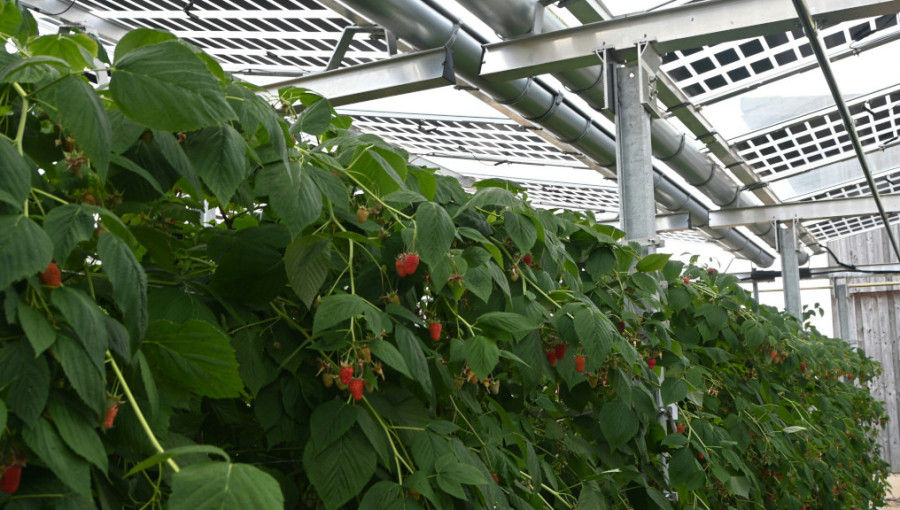Recent research highlights the differing effects of agricultural photovoltaics (agri-PV) shading on raspberry and strawberry crops, demonstrating the necessity for tailored design approaches to maximize production. Raspberries and strawberries, which were among the first fruits cultivated under agri-PV systems, benefit significantly from the protection these setups offer against severe weather conditions, replacing traditional plastic film covers.
Jocelyn Widmer from Agroscope in Switzerland has led a study to assess how agri-PV shading influences berry yields and quality, monitoring installations across three different Swiss farms. The research specifically focused on the daily light integral (DLI)—a measure of the photosynthetically active light that reaches each square meter daily. Rather than introducing entirely new growing methods, the aim is to implement agri-PV as a replacement for existing structures typically used by Swiss farmers. This involved comparing yields and quality under agri-PV systems with those grown under standard plastic tunnels.
The study spanned diverse regions in Switzerland, including a 2,000-square-meter plantation near Bern and a 4,000-square-meter site in the south, both cultivating various strawberry varieties and raspberry types. The third site, encompassing 7,400 square meters in the Luzerner Seetal region, adhered to organic farming practices for raspberries.
At the Agrovoltaics World Conference, Widmer presented findings that emphasized light availability as a vital determinant of agricultural yield, confirming that increased light correlates positively with berry production—an effect more pronounced in strawberries. However, individual berry weight remained constant regardless of light conditions, and acidity showed no significant variation. Intriguingly, sugar content diminished with increased shading from the solar modules, indicating a critical quality factor. While raspberry firmness was unaffected, strawberries exposed to less light experienced a reduction in firmness, possibly linked to reduced solar radiation.
The research indicated that strawberries are particularly sensitive to shading, necessitating a minimum of 25 moles per day per square meter to maintain stable yields, while raspberries can endure partial shading with a recommended minimum of 15 moles. These findings suggest that future agri-PV installations for both berries could be strategically designed to optimize light exposure. Notably, yields for raspberries are consistently higher under any form of protective cover, reinforcing the advantages of using solar modules over open-field cultivation.

